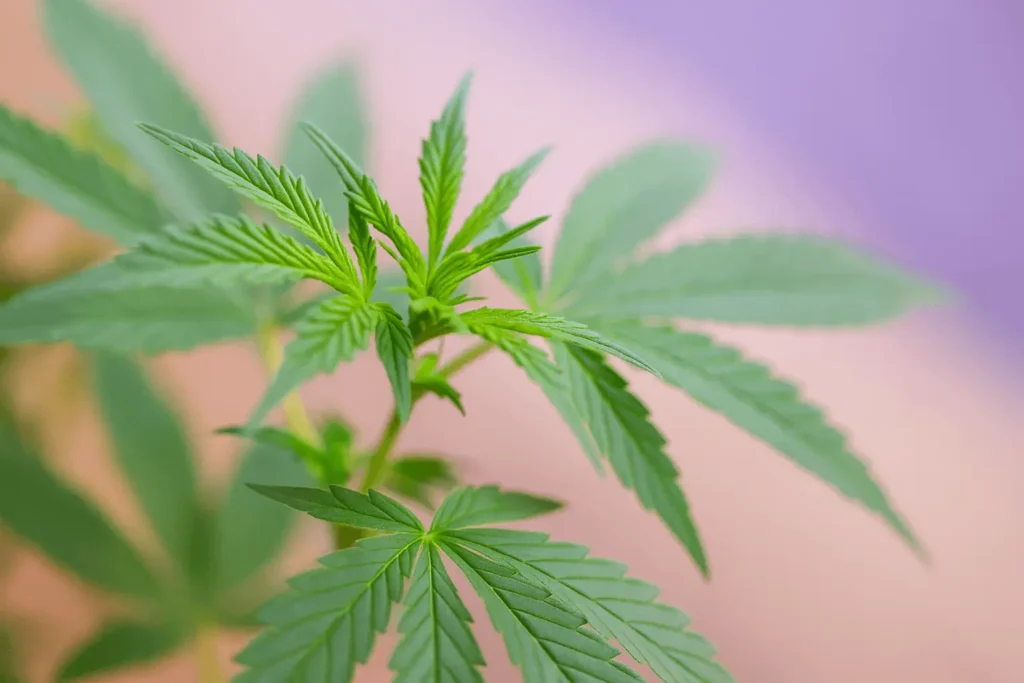
In the ever-expanding world of cannabinoids, most of us are familiar with the likes of CBD and THC, but what is CBG and why should it catch our attention?
Cannabigerol, or CBG, is a lesser-known compound that plays a crucial role in the cannabis plant, acting as a precursor to many other cannabinoids.
Emerging research hints at its potential health benefits, ranging from anti-inflammatory properties to neuroprotective effects.
As we delve deeper into the myriad of cannabinoids available, understanding CBG could open up new avenues for both medicinal and recreational use.
Join us as we unravel the mysteries and benefits of this intriguing compound.

Cannabigerol (CBG) is gaining attention due to its unique role in the cannabis plant.
While it might not be as well-known as CBD or THC, it is essential to understand CBG to fully appreciate its potential uses and benefits.
CBG, or cannabigerol, is one of the many cannabinoids found in the cannabis plant.
Unlike THC or CBD, CBG is a non-intoxicating compound, meaning it does not produce the “high” associated with cannabis use.
It serves as a chemical precursor that eventually transforms into other cannabinoids.
The process begins with CBGA, the acidic form of CBG, which undergoes enzymatic reactions to form CBD, THC, and CBC.
This transformation makes CBG a crucial element in the cannabinoid lifecycle.
Understanding what CBG is and its role in cannabinoid synthesis can help in appreciating its potential health benefits.
While research is still emerging, CBG’s unique properties suggest it could offer significant therapeutic applications.
CBG is often referred to as the “mother” of all cannabinoids. This nickname arises because CBG is the first cannabinoid to form in the cannabis plant.
In the early stages of growth, cannabis plants primarily produce CBGA, which later converts into other cannabinoids through biosynthesis.
The concentration of CBG in mature cannabis plants tends to be low, often less than 1%.
This scarcity makes CBG extraction more challenging and expensive compared to other cannabinoids.
Despite its low concentration, CBG’s origin as a precursor makes it a valuable target for genetic modification.
Scientists are exploring ways to enhance CBG production in plants, which could lead to more accessible and affordable CBG offerings in the future.
CBG, CBD, and THC are all cannabinoids but differ significantly in their effects and uses. Here’s a simple comparison:
| Feature | CBG | CBD | THC |
|---|---|---|---|
| Intoxicating | No | No | Yes |
| Role in Plant | Precursor | Derived from CBG | Derived from CBG |
| Effects | Neuroprotective | Anti-anxiety, anti-inflammatory | Psychoactive |
Understanding the differences between CBG, CBD, and THC helps consumers make informed choices about which cannabinoid best suits their needs.
While THC offers psychoactive effects, CBD is often used for its calming properties. CBG, on the other hand, is emerging as a compound with potential neuroprotective benefits.
To comprehend the potential benefits of CBG, it’s crucial to explore how this cannabinoid interacts with our body.
CBG’s mechanisms involve a complex interaction with the endocannabinoid system.
CBG interacts with the endocannabinoid system (ECS), which plays a pivotal role in maintaining homeostasis in the body.
The ECS comprises cannabinoid receptors, notably CB1 and CB2, endocannabinoids, and enzymes.
Unlike THC, which primarily binds to CB1 receptors, CBG is thought to have a broader range of action.
It interacts with both CB1 and CB2 receptors, potentially modulating the effects of other cannabinoids.
This interaction suggests CBG may influence mood, pain, and inflammation.
Understanding these interactions helps in appreciating how CBG can contribute to maintaining balance within our bodies.
While research is ongoing, the ECS remains a promising area for understanding cannabinoid effects.
CBG is believed to have several biological functions that could be beneficial for health.
Some of these include:
These functions make CBG a candidate for further research in medical applications.
However, more studies are necessary to confirm its efficacy and true effects within the endocannabinoid system.
As research into CBG progresses, its potential benefits for health and wellness become more apparent.
From reducing inflammation to supporting brain health, CBG offers promising applications.
One of the most researched aspects of CBG is its potential to reduce inflammation.
Studies suggest CBG can inhibit inflammatory markers, which is crucial for conditions like arthritis.
These properties make CBG an attractive option for those seeking natural anti-inflammatory solutions.
However, consult a healthcare provider before using CBG for medical purposes.
CBG’s potential neuroprotective effects hold promise for treating various neurological conditions. Research indicates CBG might protect brain cells and support nerve health.
Understanding these effects could open new doors for treating neurological disorders with fewer side effects compared to conventional therapies.
CBG might also benefit digestive health, offering relief for those with gastrointestinal issues.
Emerging research suggests:
These potential benefits make CBG an interesting option for those seeking to improve their digestive well-being naturally.
As awareness of CBG grows, its presence in the market is also increasing.
Understanding its availability and future potential is key for consumers interested in exploring this cannabinoid.
Currently, CBG products are less common than CBD or THC products, but interest is growing. The market includes:
Despite its limited availability, the demand for CBG is slowly increasing.
As research continues, more products are likely to enter the market, catering to diverse consumer needs.

The future of CBG looks promising, with ongoing research exploring its full potential. Scientists are investigating:
As these areas progress, CBG could become a mainstream cannabinoid, offering new possibilities for both medicinal and recreational use.
Before integrating CBG into your routine, it’s essential to consider legal and safety aspects.
Understanding these factors ensures safe and informed use of this cannabinoid.
The legal status of CBG varies by region, much like other cannabinoids. Key considerations include:
Understanding the legal landscape helps consumers navigate the market responsibly, ensuring compliance with regional regulations.
While CBG is generally considered safe, it’s important to be aware of potential side effects:
By taking these precautions, consumers can enjoy the potential benefits of CBG while minimising any risks associated with its use.